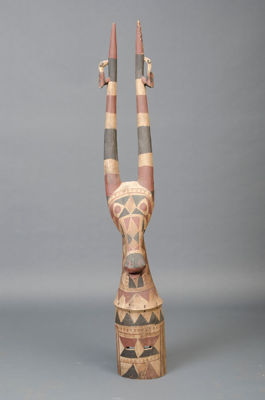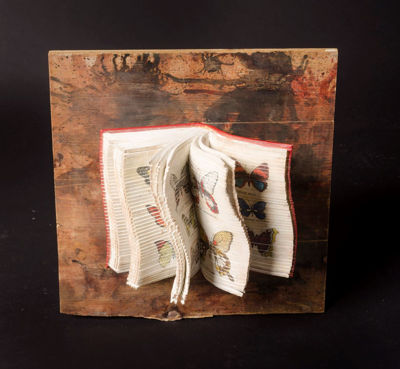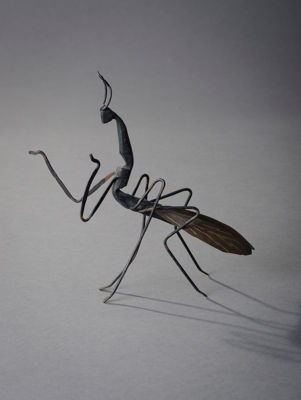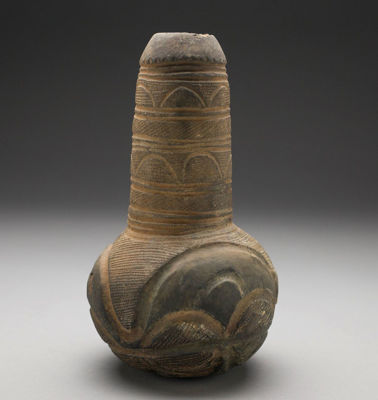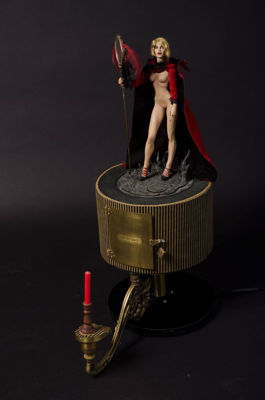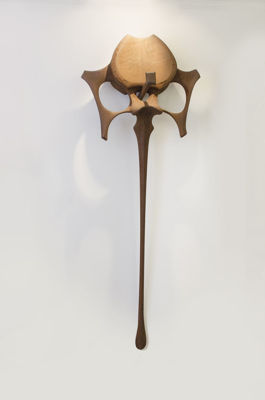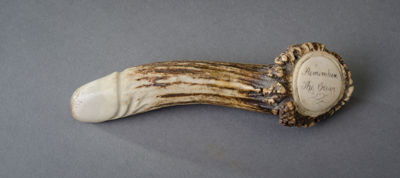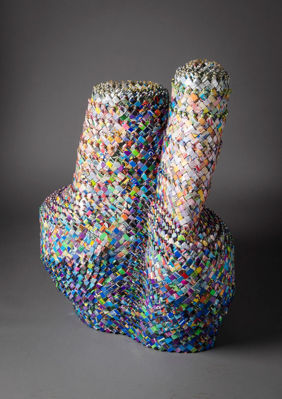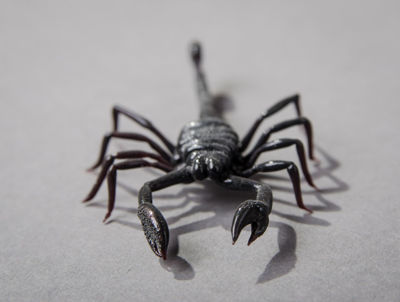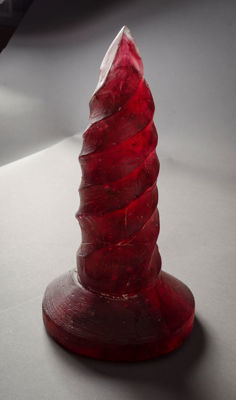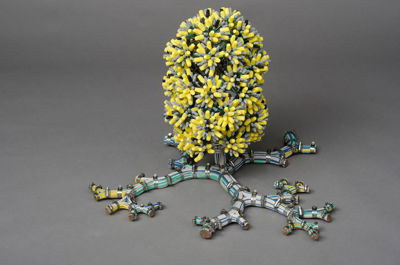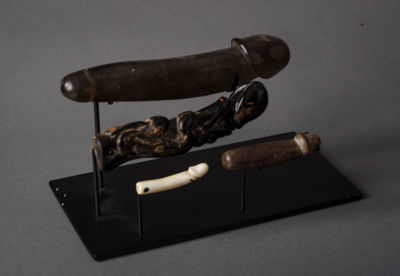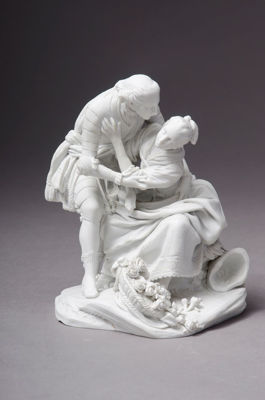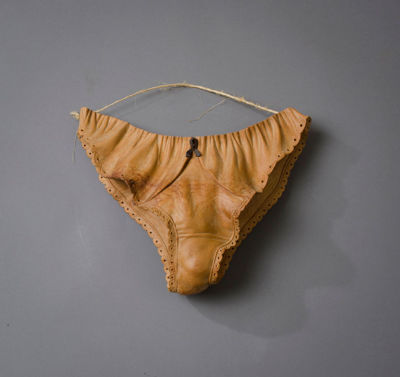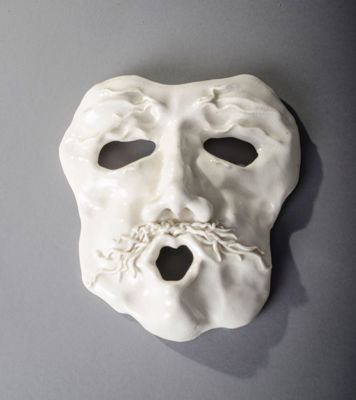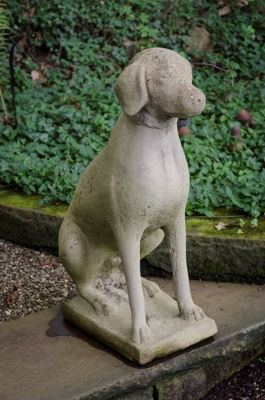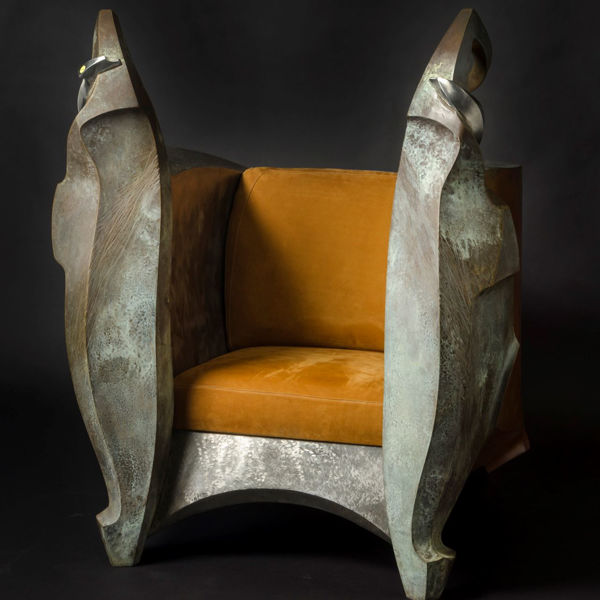Sculpture
Title: Oval Mister Wink - Peter Norton Christmas Project
Takashi Murakami (Japanese, b. 1963) Mister Wink, Cosmos Ball, 2000; Polychrome plastic with mini CD-Rom with music by Zakyumiko; Stamped signature from edition of 3000; 10 1/4" high; Publisher: Peter Norton Family Christmas Project
Title: Portal
Spiczka’s tenable use of bone structure, actually pressed into hyper-realist form from layers of sheet steel, finds the natural in conflict with the industrial. ‘Portal’ might arguably reflect rural technology, but the sheer strangeness and slippage between organic, mechanic and iconic gives the piece a more instinctually alien impression, the symmetrical shape (clearly mirroring the pelvis) and wirelike hanging fronds seemingly sourced from science-fiction.
Title: Portrait
Shen Hongbiao’s sculpture explores a teasing contrast of form — dense material such as steel, bronze or stone shaping softer, fluid interpretations of body and movement in an expressive and resolved style. “Portrait” depicts a Mongolian man, a culture frequently and emphatically returned to by Hongbiao, and holds a sense of peace that implies the artist’s interest in environmental tranquility. A subtle Accentuation of symmetry brings the piece between image and icon, the flairs and accents expressive of Hongbiao’s favour for the cultures of the Han & Wei Dynasties, where Eastern modes of practice were opened up to a new artistic freedom.
Title: Pre-Columbian Pottery Figural Vessel
A Pre-Columbian Pottery Figural Vessel likely Colima, depicting a seated male figure with headdress.
Title: Relic V
Spiczka’s ‘Relic’ is derived from dual childhood experiences; the discovery, capture of and occasional matchbox-marvelling at a bleached, jewel-like skeleton from a boar in Minnesota, and the wild young imaginings of crusted religious relics — fingers, skulls, bodily appendages — often rumoured to be sat rotting within his attended school church. Interrogating that disconnection between experience and imagination, ‘Relic V’ ghosts the loaded and significant form of the crucifix and the skeletal structure of man, an impression of bone or wood afforded through the delicate pressing, welding, and oxidation of steel sheets. The celebration of harmonic structure, abstract symbolism, an instrument-like form and balance is met with a far messier reality of pain, suffering and death.
Title: Sevres-style Bisque Figural Group
Sevres-style Bisque Figural Group After Falconet, France, 19th century, the man leaning in to embrace a woman who sits beside a basket of flowers, ht. 8 in. N.B. The figures are modeled after Jacquot and Colette in a play by Flavert, first performed in 1766.
Title: Sevres-style Bisque with 2 Figures
Sevres-style Bisque with Two Figures, France, 19th century, the man leaning in to try to kiss a woman who is rejecting him. N.B. Probably modeled after Bachelier's depiction of characters in La Fee Urgelee, a comic opera first performed at the Court of Fontainebleau in 1765.



